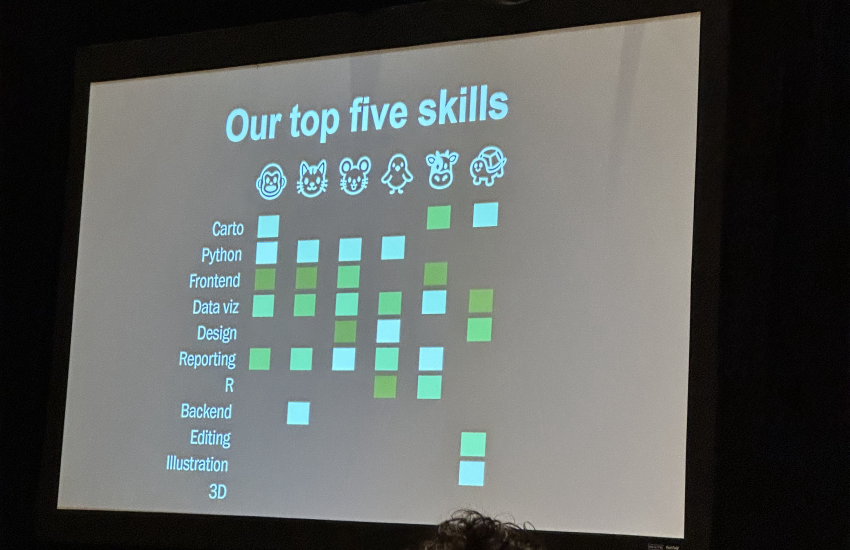Six ways you might consider visualizing political issues and ideologies this election
With the 2020 election around the corner, we’re on the look out for new ways news outlets, advocacy groups and other organizations are visualizing political stances and voter opinions. Below is a round up of six types of charts and visualizations used to communicate political issues and ideologies.
Political Compass
The political compass is a popular method for visualizing political leanings by plotting ideological dimensions on two axes such as economic left vs. right on the horizontal axis and authoritarian vs. libertarian or socially left vs. socially right on the vertical axis. The graph is often criticized for oversimplifying positions but, if used within more specific contexts, can be useful.
Stacked vs. Split Bar Charts
Split and stacked bar charts can be used to display the same information in different ways. The primary advantage of a stacked bar chart is that it provides a feel for the proportion of each component while split bar charts allow for easy quantitative comparison across categories. Datawrapper has a good write up of how to build them.
Choropleth Maps
Visualizing politics across geography can often be insightful, allowing users to understand the connections between opinion and location. While often used to visualize voting behavior – see this Storybench tutorial – these maps can also be used to visualize opinion.
Correlation Matrices
Correlation matrices can be used to describe the correlation of one parameter given another. See our tutorial on understanding correlations in R.
Density Plots
Density plots are a great way to understand the distribution of opinion.
Cartograms
Cartograms can map thematic variables on geographical space. The electoral college, for instance, can be visualized in this way to .






This is a horribly biased compass. American politics is exclusively in the right top most corner of the political spectrum.